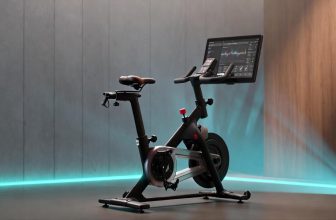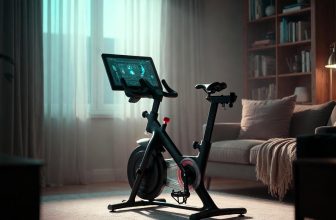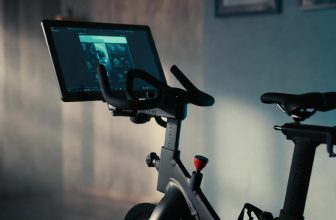Table of Contents
- Is an Exercise Bike Good for Weight Loss?
- How Exercise Bikes Support Weight Loss
- Calorie Burn Breakdown
- Factors Influencing Calorie Burn
- Types of Exercise Bikes for Weight Loss
- Upright Bikes
- Recumbent Bikes
- Spin Bikes
- Strategies to Maximize Weight Loss
- Additional Benefits of Exercise Bikes
- Practical Considerations
- FAQ
- How many calories can I burn on an exercise bike?
- Is a recumbent bike good for weight loss?
- How often should I cycle to lose weight?
- Do I need a special diet to lose weight with an exercise bike?
- Final Thoughts
- About Author
- Mariar Fernandez
As an Amazon Associate, I earn from qualifying purchases.
Is an Exercise Bike Good for Weight Loss?
Is an Exercise Bike Good for Weight Loss? Yes, exercise bikes are excellent for weight loss, burning 200–600 calories per 30-minute session, depending on intensity and body weight, when paired with a calorie-controlled diet.
How Exercise Bikes Support Weight Loss
Exercise bikes facilitate weight loss by creating a calorie deficit through cardiovascular exercise, a cornerstone of effective weight management. The CDC recommends 150–300 minutes of moderate-intensity aerobic activity weekly, and exercise bikes deliver this efficiently. A 2023 study from the Journal of Obesity found that cycling at moderate intensity burns 200–400 calories in 30 minutes for a 150-pound person, with vigorous efforts reaching 600 calories. Their accessibility and low-impact nature make them ideal for consistent use.
- Calorie Burn: Sustained pedaling increases energy expenditure, crucial for weight loss.
- Low-Impact: Gentle on joints, allowing longer sessions without discomfort.
- Year-Round Use: Indoor bikes ensure consistent workouts, unaffected by weather.
For weight loss fundamentals, check CDC’s Healthy Weight Guide.
Calorie Burn Breakdown
Calorie burn depends on intensity, duration, body weight, and bike type. Harvard Medical School provides the following estimates for 30-minute sessions:
| Weight | Moderate (12–14 mph) | Vigorous (16–19 mph) |
|---|---|---|
| 125 lbs | 210 calories | 315 calories |
| 155 lbs | 260 calories | 390 calories |
| 185 lbs | 310 calories | 465 calories |
Factors Influencing Calorie Burn
- Intensity: High-intensity interval training (HIIT) boosts calorie burn by 25–30%, per a 2024 Sports Medicine study.
- Duration: Longer or frequent short sessions (e.g., 15-minute HIIT) maximize results, per Tufts University.
- Body Weight: Heavier individuals expend more energy, increasing burn rates.
- Bike Type: Upright and spin bikes engage more muscles, slightly outpacing recumbent bikes.
Learn about HIIT cycling at American College of Sports Medicine.
Types of Exercise Bikes for Weight Loss
Upright Bikes
Upright bikes resemble traditional bicycles, engaging core and upper-body muscles for enhanced calorie burn.
- Advantages: Compact, ideal for HIIT, burns 250–400 calories in 30 minutes for a 150-pound person.
- Best For: Those seeking intense, full-body workouts.
- Example: ProForm Pro C10U, with iFIT integration for guided sessions.
Recumbent Bikes
Recumbent bikes feature a reclined seat with back support, prioritizing comfort and joint safety.
- Advantages: Low-impact, promotes longer sessions, burns 200–350 calories in 30 minutes.
- Best For: Beginners, seniors, or those with joint pain.
- Example: NordicTrack R35, with 26 resistance levels and a 14-inch touchscreen.
Spin Bikes
Spin bikes are built for high-intensity workouts, often used in group fitness settings.
- Advantages: High resistance and standing options yield up to 600 calories in 30 minutes.
- Best For: Advanced users or those using virtual classes.
- Example: Peloton Bike, offering immersive classes via a large HD screen.
Explore top bike models at Consumer Reports.
Strategies to Maximize Weight Loss
To optimize weight loss with an exercise bike, adopt these evidence-based approaches:
- Use HIIT: Alternate 30 seconds of high resistance with 1 minute of low resistance for 15–20 minutes. A 2024 Journal of Sports Sciences study found HIIT increases fat burn by 20% compared to steady-state cardio.
- Monitor Metrics: Track calories and heart rate using bike displays or apps like Strava.
- Pair with Diet: A 500–750 calorie daily deficit, per Mayo Clinic, supports 1–2 pounds of weekly weight loss.
- Vary Intensity: Combine moderate (60–70% max heart rate) and vigorous (70–85%) sessions to avoid plateaus.
- Stay Consistent: Aim for 4–5 weekly sessions, as consistency drives results, per Harvard Health.
For dietary guidance, visit Mayo Clinic’s Weight Loss Tips.
Additional Benefits of Exercise Bikes
Exercise bikes offer benefits beyond weight loss, enhancing overall health:
- Heart Health: A 2023 American Heart Association study found cycling reduces cardiovascular disease risk by 15%.
- Muscle Toning: Strengthens quads, hamstrings, and glutes without joint stress.
- Mental Wellness: Boosts endorphins, cutting depression risk by 20%, per Harvard Health.
- Joint-Friendly: Ideal for arthritis or injury recovery, as noted by the Arthritis Foundation.
Discover more benefits at Arthritis Foundation’s Exercise Resources.
Practical Considerations
- Set Goals: Target 1–2 pounds of weekly weight loss, as recommended by the CDC.
- Choose Wisely: Select a bike based on space and fitness level (e.g., folding bikes like XTERRA FB150 for small homes).
- Maintenance: Clean sweat off frames and lubricate moving parts, per manufacturer guidelines.
- Motivation: Use apps like Peloton or iFIT for engaging workouts. “Classes make every session exciting,” says a Peloton user.
FAQ
How many calories can I burn on an exercise bike?
A 150-pound person burns 200–400 calories in 30 minutes at moderate intensity, up to 600 calories with vigorous effort or HIIT.
Is a recumbent bike good for weight loss?
Yes, recumbent bikes burn 200–350 calories per 30 minutes and encourage longer sessions due to comfort, aiding weight loss.
How often should I cycle to lose weight?
Cycle 4–5 times weekly for 30–45 minutes at moderate to vigorous intensity, paired with a balanced diet.
Do I need a special diet to lose weight with an exercise bike?
A calorie-controlled diet with a 500–750 calorie deficit daily, as per Mayo Clinic, is essential for effective weight loss.
Final Thoughts
Exercise bikes are highly effective for weight loss, offering customizable, low-impact workouts that burn significant calories. Upright and spin bikes maximize intensity, while recumbent bikes suit longer sessions or joint concerns. Combine cycling with HIIT, a balanced diet, and consistent effort to achieve sustainable weight loss. Choose a bike that aligns with your needs and leverage technology to stay motivated.







